IT’S A VERY EXCITING TIME FOR ALL OF US AT D|OPS DIGITAL!
Why? Well, it goes without saying our recent company launch is exciting but so is the opportunity we see in front of us. Driven by their competition and with technology now powering everything the vast majority of companies are transitioning to a DevOps strategy and the spend market-wide, according to IDC, is a whopping $5.2B in 2018 forecast to reach $15B by 2023. And that’s on software alone.
The software is something we at D|OPS Digital look at too; not only for its functionality and integration points within an existing ecosystem but equally important, when deployed and configured correctly, in how it influences and shapes the processes, people, practices, and culture a successful transition can’t be achieved without.
In his last post, Ben introduced our company and talked about our approach as a “Design Led” DevOps consulting firm enabling customers to build, test, and deploy quality code fast. Intrinsic to that is our relationship with GitLab and our focus on their software platform; a platform we believe is central to accelerated, efficient development and a non-disruptive change agent driving the right processes and behaviors across a DevOps practice.
Before we talk about the platform itself we should take a look at some of the challenges organizations are facing today. These challenges are well known to most development and operations professionals; multiple toolchains with multiple tools per chain make for a complex ecosystem. With skills and resources at a premium, senior team members spend an inordinate amount of time managing and integrating the toolchain in an attempt to increase visibility while maintaining security. It’s a difficult environment to sustain, automate, build efficient processes around, or drive cultural changes in. And It’s why 87% of companies who are transitioning to a DevOps methodology are disappointed with the results they’re seeing.
We know this too; which brings us back to GitLab.
A SINGULAR DEVOPS PLATFORM
Understanding this common non-standardized approach and its associated challenges, we wanted to focus on a platform that provided all required functionality within a single application yet allowed for deployment and integration at a pace that makes sense based on requirements and the existing software ecosystem.

GitLab checked the boxes for us providing end-to-end visibility between cross-functional teams allowing each to see what matters most to them and its impact on the development lifecycle instantly. The increased visibility and trusted single source of data bring security and compliance earlier into the development process so developers see all relevant security and ops information for any changes.
Now think back to some of the challenges we mentioned earlier; multiple toolchains and multiple tools per chain, a complex ecosystem to integrate, manage, automate, and monitor; GitLab addresses those pain points allowing teams to focus on the code rather than the underlying tools thereby reducing development cycle times. It enables planning and collaboration across teams driving the cultural and organizational change critical to a successful DevOps rollout.
The impact on the business is significant; fewer tools, faster releases, an accelerated time to market, and greater market share. As far as we’re concerned GitLab is the right DevOps platform from both a technical and business perspective.
SHIFT RIGHT TO SHIFT LEFT
But this doesn’t necessarily mean you have to replace all the software you’ve invested in on day one, in fact introducing a platform and making organizational-wide changes could have a significant impact on teams, processes, and the business itself. GitLab can be deployed for specific functionality initially, SCM and CI/CD for example, while being fully integrated with existing software. As teams and users are enabled its additional functionality can be adopted at a pace that makes sense based upon your requirements. You’re still reducing toolchain complexity, you’re still standardizing on a single platform that can drive change within the business and deliver code more rapidly and efficiently, and you’re still able to achieve increased automation, but you’re doing it in a non-disruptive way.

We call this “shifting right to shift left”. As you shift right and adopt more of the integrated functionality GitLab offers, you shift left bringing additional capabilities earlier into the development lifecycle allowing potential issues to be discovered and addressed more quickly and efficiently. You continue to reduce the number of tools used in your environment which in turn increases your ROI.
EMPOWERING DEVELOPERS
It’s not the software alone that drives success in business performance, but it is a critical aspect of it. The development software; its level of integration and collaboration features, can have a make-it-or-break impact on developer velocity. Not only is the speed in which code is delivered but it is also enabling developers to meet their full potential.
It takes the right people and processes in addition to development tools to enable a successful DevOps practice, and it’s something we spend a lot of time working with our customers on, but the software is a critical aspect of it. In fact, a recent McKinsey & Company study showed that companies with strong development tools and integrated CI/CD development environments are 65% more innovative than companies without and that developer retention rates are 47% higher.
With the right tools, cultural and procedural changes are that much easier to make. It’s why we look so closely at the platform with our customers as well as the processes, people, and practices that utilize it. That’s why we’ve partnered with GitLab.

Thanks for reading,
John

